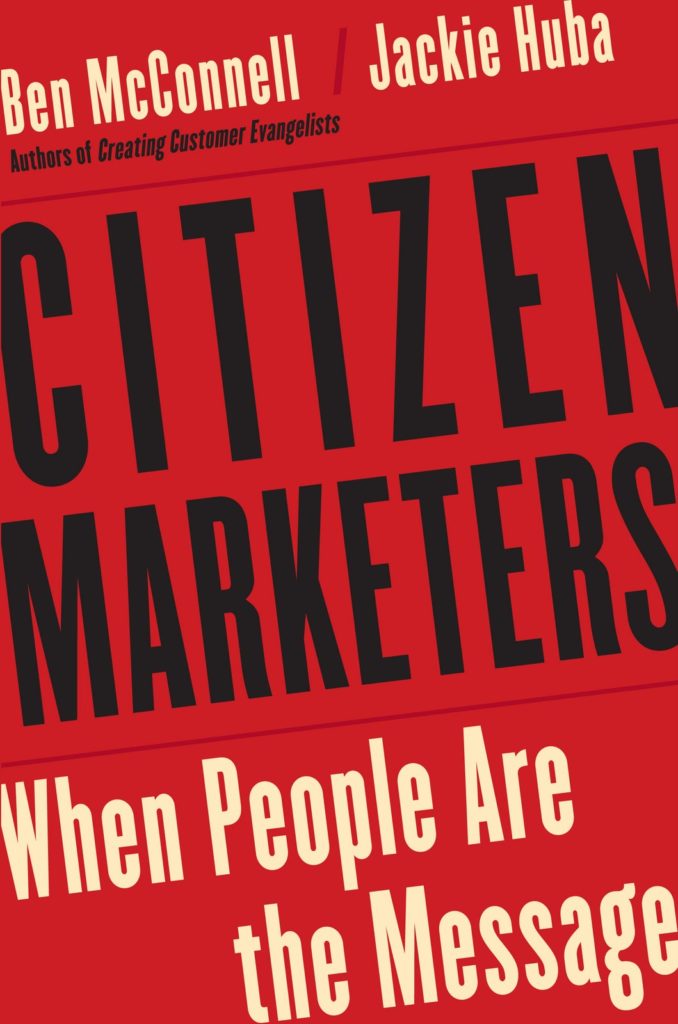
Sometimes, the best folks to market your brand are not advertising agencies, publicists or sales persons.
Just ask Ben McConnell and Jackie Huba, stalwarts of the highly popular Church of the Customer blog and founders of Ant’s Eye View.
Proponents of customer evangelism, community marketing and good old Word-Of-Mouth (WOM), McConnell and Huba’s book Citizen Marketers – When People Are the Message reads a lot like their blog, using numerous examples and stories to drive home the point.
What I love about the book is how it distills the key essence of WOM marketing in an easy to understand manner.
Against the omnipresent backdrop of social media (forums, blogs, podcasts, video streams, and social networks), Citizen Marketers shines the spotlight on four different groups of citizen marketers: namely Filters, Fanatics, Facilitators, and Firecrackers.
Let us go through each in turn.
Filters – content aggregators
Filters are the wire services of the web world who are aggregators and content curators. An example is Starbucks Gossip which provides the latest gossips and news on the world’s number one coffee brand.
Fanatics – brand lovers
Fanatics are the true believers and evangelists who work like “volunteer coaches”, both praising and critiquing a company and its products. An example is the McChronicles blog which highlights the McDonalds experience from a consumer viewpoint, and the Disney Blog.
Facilitators – community builders
Facilitators help to create online communities and special interest groups through bulletin boards and other software. An example is the Tivo Community in the US and a fan forum on the MINI car.
Firecrackers – viral content spreaders
Firecrackers are like the one-hit wonders of the online world, and they generate trending topics that grow very quickly but can also die down as fast. An example is the recent Old Spice Man Youtube videos, as well as Vincent Ferrari’s notorious AOL Cancellation Video.
(Check out this page which shows all the examples cited in the book. I love how generous these guys are!)
The One Percent Rule
Citizen Marketers highlights the now familiar One Percent Rule, which cites that a tiny proportion of users (known as Creators) generate content on social networks (Wikipedia, Facebook, Twitter, YouTube, Flickr, MySpace, Reddit, Digg, etc). These users may then trigger likes, comments and shares from what we call Contributors who in turn have a community of Lurkers who consume this content.
Thus, the 1 percenters of creators can exert a disproportionate influence throughout the network.

Through the advent of Web 2.0 technologies, the playing field is leveled as everybody has a fighting chance to be the one percenters who exert an impact through their own digital content, networks and influence.
Democratising Influence of Social Media
Peppered with numerous case studies, the book paints a rosy picture of how citizen content creators are democratising media akin to how Johann Gutenberg’s invention of the printing press democratised literacy.
Hobbyists and volunteers like Eric Karkovack who started Save Surge (and later Vault Kicks) to petition the Coca-Cola Company to resurrect a dead soda are lauded as the altruistic brand activists of the 21st century.
On the same token, fans may not let any company off lightly if deceit is discovered. High profile examples include Working Families for Walmart, Lonelygirl15, and the failure of Whole Foods CEO from disclosing his involvement in anonymous Yahoo! postings.
3 Cs to enlist Citizen Marketers
So how can companies “democratise” their businesses?
McConnell and Huba suggests that companies should develop programmes and communities specifically for citizen marketers, and to incorporate their ideas into one’s production system. This approach is labelled the “3 Cs”, namely
Contests
Solicit citizen-created media and active fan communities to get the word out by incentivising them.
Co-creation
Involve customers in the content production process and get them involved in voting on them. T-shirt maker Threadless is a great example of how a company can harness the collective creativity, imagination and industry of its members to co-create and deliver value to customers.
Community
To succeed in creating an enduring online community, it is suggested that you could tap onto your customer’s consciousness of their own kind (eg being a New Yorker), adoption of shared rituals and traditions, and sense of moral responsibility to the community is key.
A good way to strengthen camaraderie is to build
Conclusion
To those new to the world of social media marketing, Citizen Marketers provides a good starting point to understanding how influence spreads. However, it provides more of a tour of what’s happening in this space rather than practical and tangible strategies.
While many of the case studies cited appear to be those of already established companies with well-known brands, some of its ideas could be adapted for smaller start-ups and medium-sized businesses.
Having said that, it could be a mammoth task trying to form fan clubs of engaged citizen marketers to support your cause if your product isn’t extremely innovative or remarkable (see Purple Cow) in the first instance.
Admittedly, the social media universe have changed since the book was published in 2007 and online community engagement is now more challenging than ever (Facebook and Twitter weren’t in the reckoning then).
However, some of its principles are still enduring, like the fact that companies should let others do the talking for them without overt interference.
Overall, I’d recommend this book as a good way for you to understand how you can better engage your online stakeholders and to better manage the process of community marketing and engagement.

